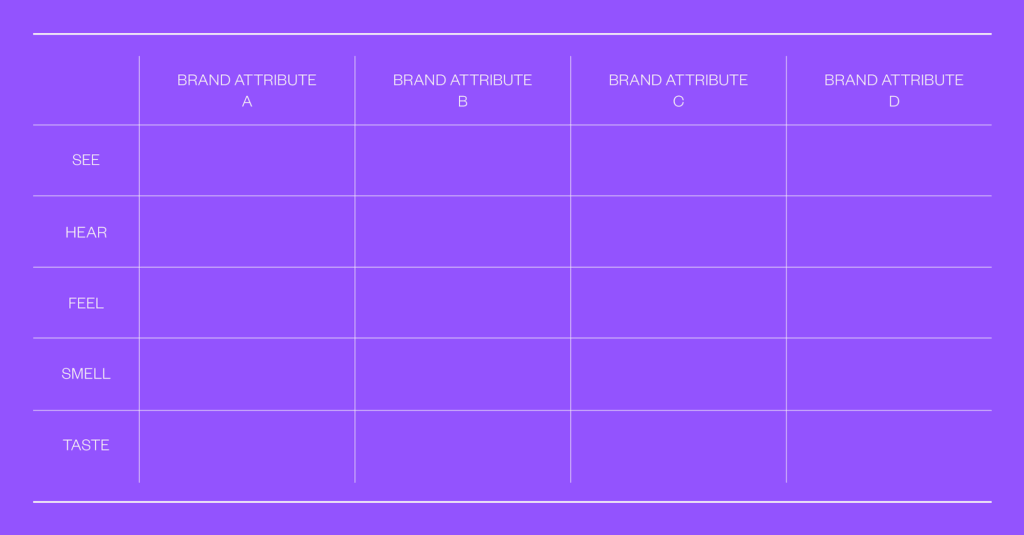In the world of brand building, the distance between a great idea and a great experience is deceptively vast. Strategy sets the course, but expression determines whether the journey succeeds or falters. Too often, what begins as a powerful brand idea becomes diluted—or lost entirely—in translation.
Nathan Hendricks, Chief Creative Officer at LPK, explores the nuanced, often chaotic process of moving from strategic intent to tangible expression. In this piece, he unpacks why so many brand strategies fall short in execution, and what it really takes to close the gap between inspiration and impact.
The Elusive Alchemy of Translation
Have you ever read a book, been thrilled to hear that it’s been adapted into a movie and then been utterly disappointed when you watch the film? It’s as if the director read a different book than you did. This translation challenge exists in every creative field where vision must become reality. In filmmaking, a director transforms words into visual storytelling with each decision representing a translation point where meaning can shift or dissolve entirely.
As someone working for decades in brand design, I can attest that the same holds true for brands. While you’re reading this, someone is putting the finishing touches on a brand strategy with hope blossoming in their heart. If it’s anything like the infinite number of brand strategies that have come before it, it will almost certainly fail to deliver on its potential. A great brand like a great movie is a miracle.
Running the Gauntlet
The translation from brand strategy to tangible experience mirrors the journey from novel to film adaptation. A strategy document captures a brand’s essential identity, but these abstract concepts must take physical form across dozens of touchpoints. Each translation step creates an opportunity for meaning to shift or dissolve entirely.
This process confronts formidable obstacles. The strategy itself might miss the mark. Decision-makers may compromise its core through excessive revisions. Organizations frequently lack the resources or commitment to execute effectively. Perhaps most insidiously, each stakeholder may interpret the strategy differently, creating fundamental misalignments that compound with each decision.
What makes this journey particularly treacherous is the sheer number of translators involved. When a strategy describes a brand as embodying “sophisticated playfulness,” a designer might envision clean lines punctuated by unexpected colors while a copywriter crafts wry, intelligent messaging. Neither is wrong, but their divergent interpretations begin to fragment the brand’s cohesive vision.
A Bonfire of Resources
This is the disorganized mess that passes for brand building today. Every day, substantial capital, careers, time and natural resources are wasted in failed attempts to translate compelling brand strategies into tangible brand realities. Companies invest millions in developing brand executions only to see them implemented inconsistently. The financial cost is obvious, but the opportunity cost may be even greater.
Consider also the human cost: strategists whose carefully crafted recommendations are misunderstood; designers whose work is compromised by unclear direction; executives who stake their reputations on rebrands that fall flat. The environmental impact cannot be overlooked either—failed rebrands often mean discarding physical materials, creating unnecessary waste.
The persistence of this problem suggests something fundamentally challenging about the translation from strategy to expression. It’s not merely incompetence or negligence, though these certainly occur. Rather, it points to inherent difficulties in moving from abstract concepts to concrete manifestations while preserving essential meaning.
Lost and Found in Translation
To surmount this challenge requires recognizing brand strategy and brand expression as distinct but interconnected languages. Brand strategy speaks in the vocabulary of positioning, differentiation and values. Brand expression speaks through color, shape, typography and interaction. The fundamental challenge is ensuring these languages remain in dialogue with each other, creating a coherent conversation rather than disconnected monologues.
Effective translation requires deep fluency in both languages and a commitment to preserving the essence of the message. It demands interpreters who can move comfortably between abstract strategic thinking and concrete expressive decisions, maintaining consistency of meaning across this shift in modality.
The Great Unpacking: From Strategy to Sensory Experience
Translation begins with strategic distillation—identifying the 3 to 5 foundational ideas that form a brand’s core. This crucial first step acknowledges a fundamental truth: not every strategic insight deserves direct expression. A 10-page strategy document cannot and should not be translated in its entirety.
The conventional approach of word-mapping exercises and mood board creation often produces superficial results. The resulting expressions may look appropriate but fail to resonate at the deeper level where true brand connections form. They address only the surface of brand expression without exploring the full sensory landscape where brands truly live.
Beyond Visual: The Multi-Sensory Vocabulary
Truly breakthrough brands operate at a visceral, intuitive level. Consider how Apple products feel immediately distinctive in your hand, how the sound of a BMW door closing conveys precision engineering or how the scent of a luxury hotel establishes its brand promise before you reach reception.
To achieve this depth of expression, we must expand our translation process beyond visual associations to encompass all senses. What must your audience see, feel, hear, smell and taste to understand what your brand is truly about? This exercise may seem strange, but suspend disbelief and give it a shot. You’ll be surprised at the richness you’ll unearth.
Expanding our translation process to include all five senses opens unexpected pathways. What might “approachable trustworthiness” smell like? Perhaps the clean but gentle scent of cotton sheets dried in fresh air—familiar, comforting and free from artificial notes that might trigger suspicion.
What must your audience see, hear, feel, smell and taste to understand your brand?

This multi-sensory exploration aligns with how humans actually experience the world. We don’t process brands through isolated sensory channels but as integrated experiences that engage multiple senses simultaneously.
Emergent Themes and Experiential Attributes
Following this approach ultimately reveals the brand’s multi-sensorial vocabulary. As you map brand attributes across sensory dimensions, patterns naturally emerge suggesting fundamental themes that transcend individual senses. These themes become your shopping list for creating mood boards that bring the brand’s world to life.
The clustering process transforms a potentially overwhelming collection of sensory descriptors into a manageable set of experiential attributes. These attributes serve as translation bridges between strategic intent and tangible expression, providing guidance more specific than abstract strategic concepts but more flexible than prescriptive design directions.
By embracing this more comprehensive approach to translation, we move beyond superficial connections between strategy and expression. We create brands that communicate at a visceral level, engaging audiences through multiple sensory channels to deliver experiences that feel authentic, distinctive and meaningful. This is how miraculous brands emerge—not through happy accidents but through thoughtful translation that preserves the essence of strategic intent while transforming it into unforgettable experiences.
ABOUT LPK
LPK applies insightful strategy and beautiful creativity to harness change—making momentum that grows brands and businesses.







